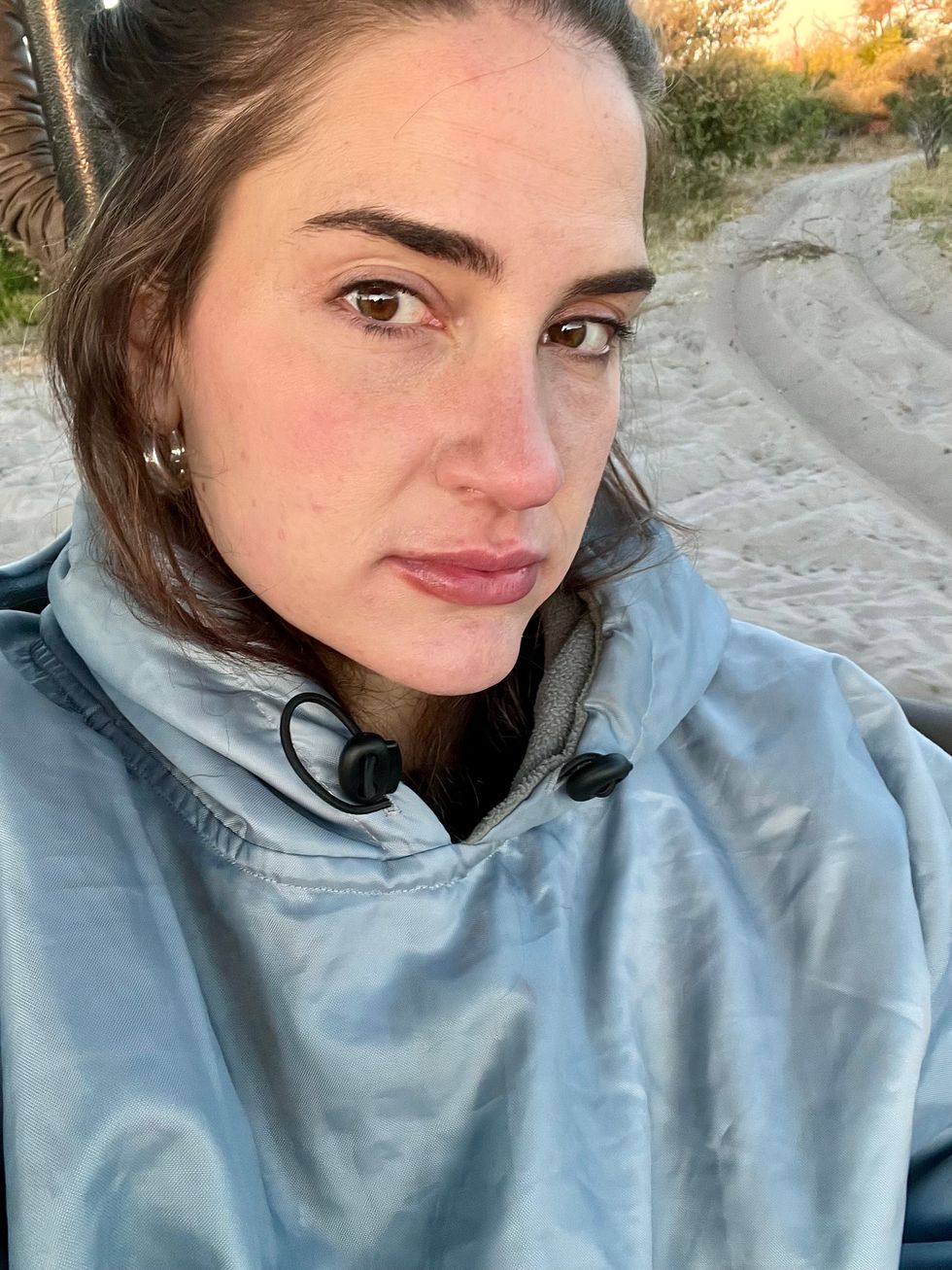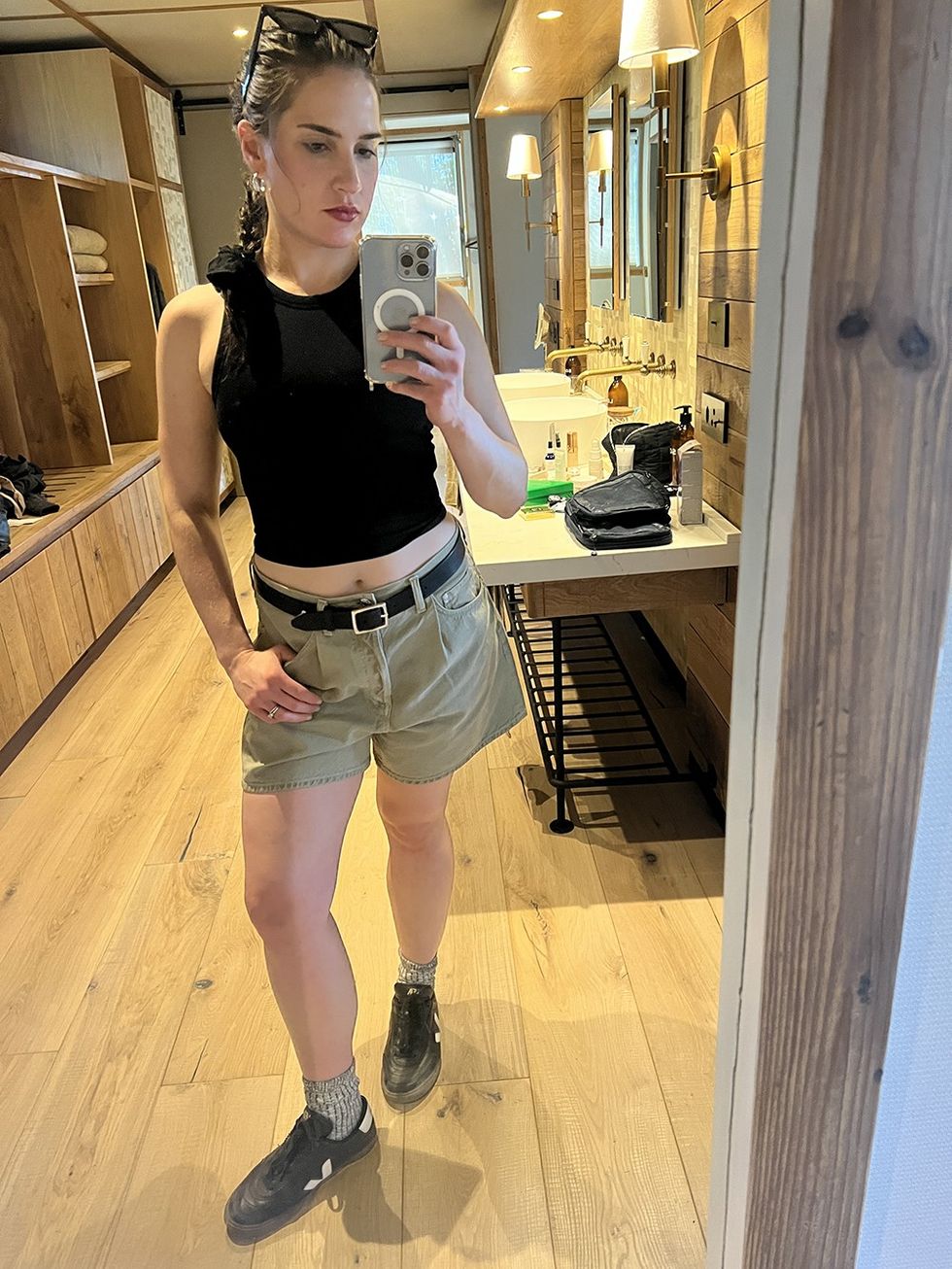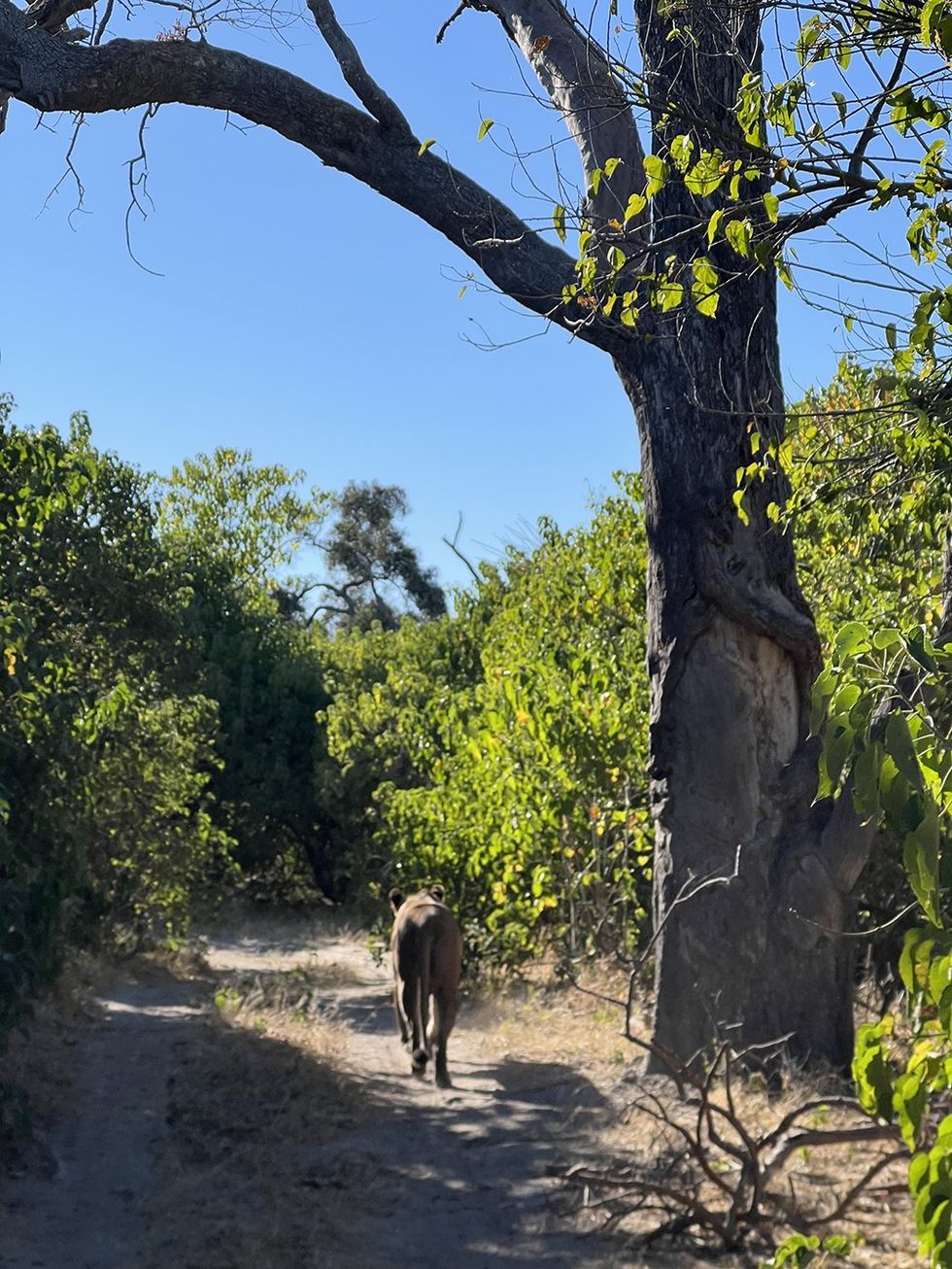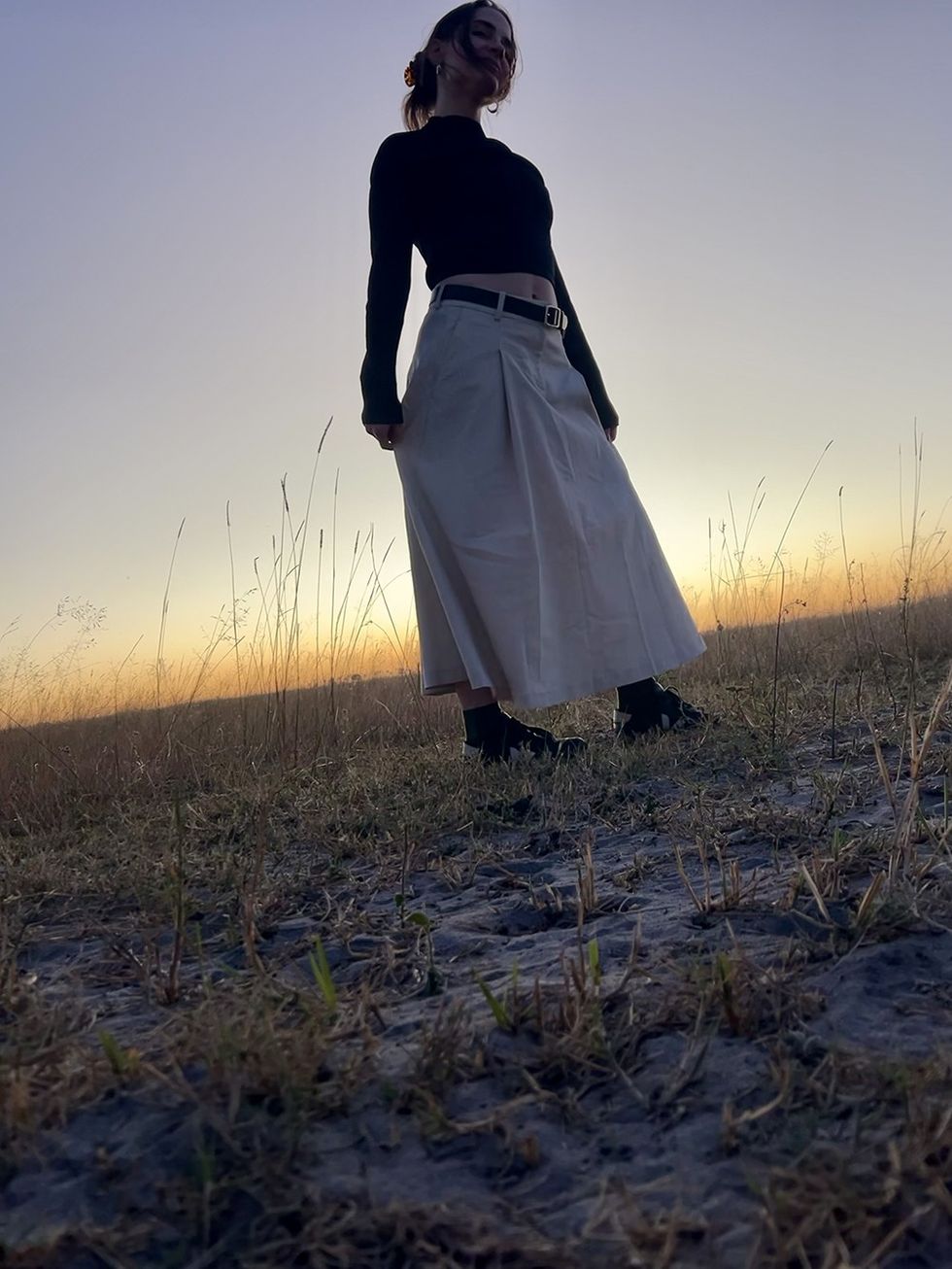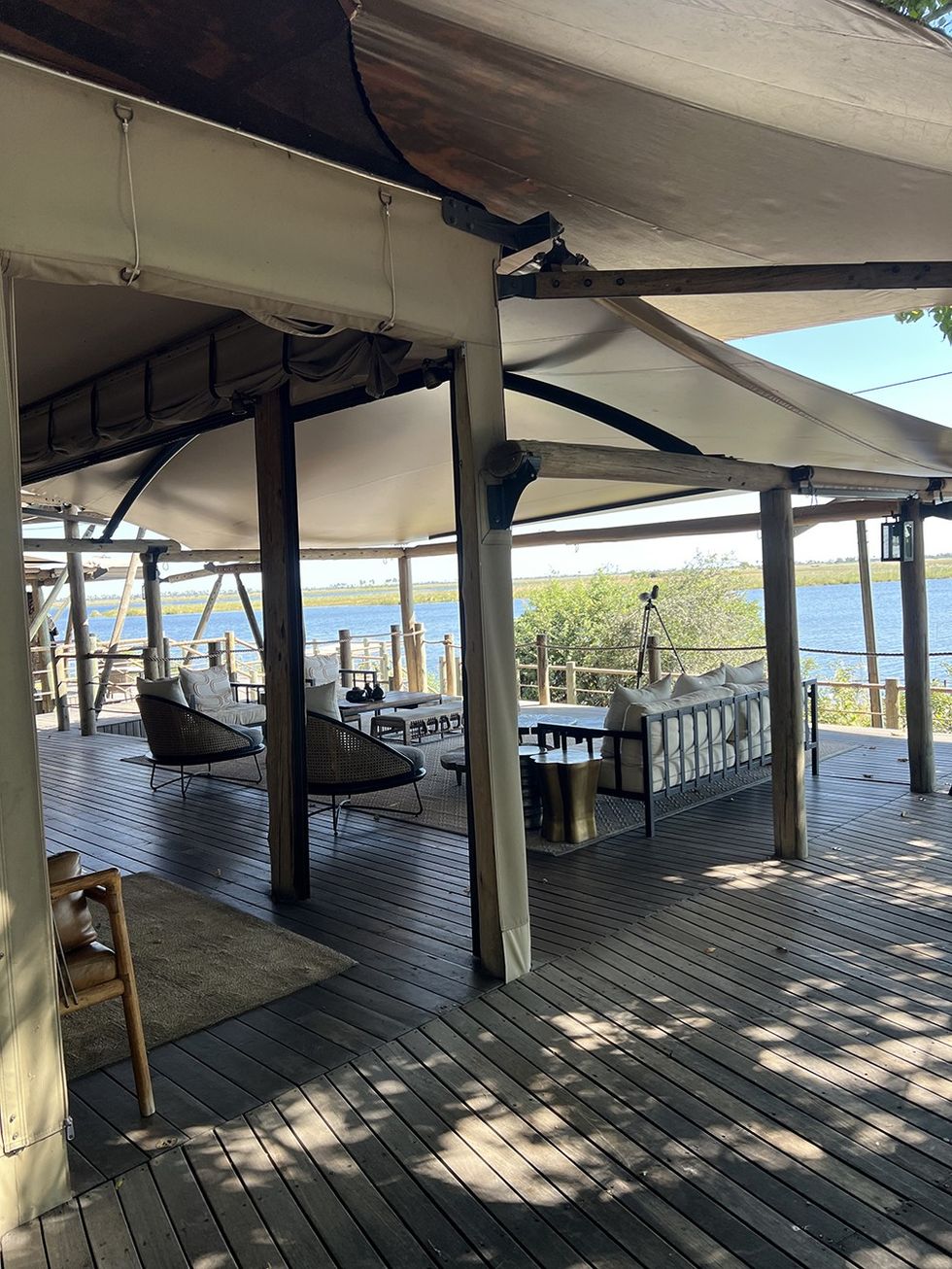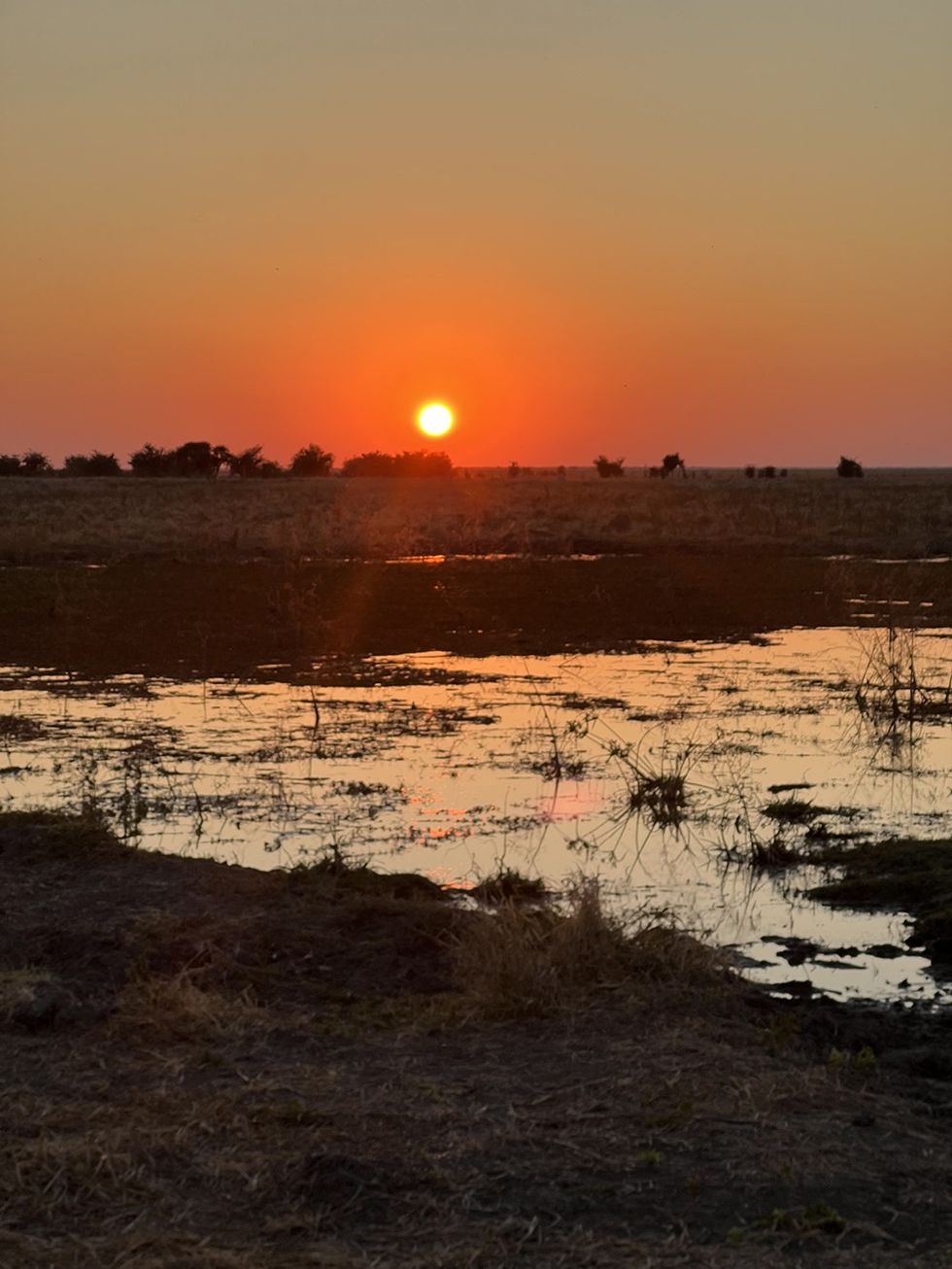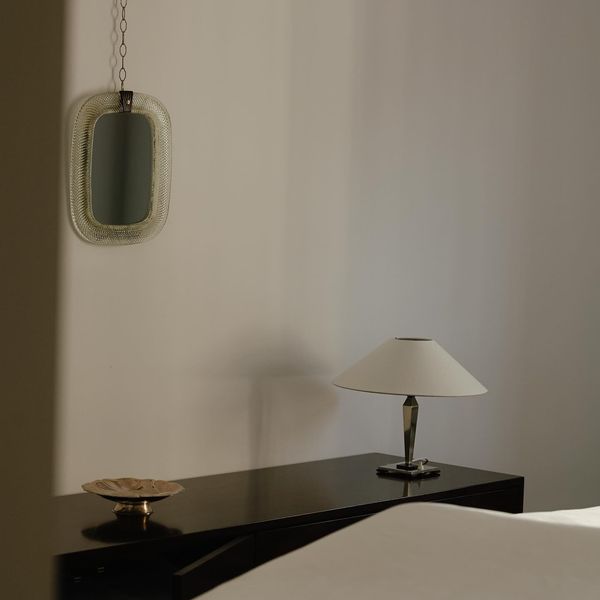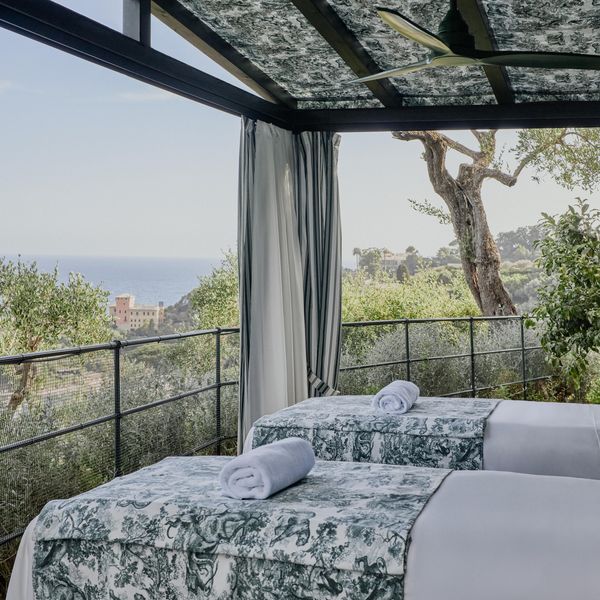I Was The "Fashion Girl" On A Remote Safari—Here's What Happened
Writer Alison Syrett Cleary documents her six-day adventure in the African bush.

I’m standing in the middle of a massive field, grass and shrublike trees stretching in every direction. Confused, I scan the horizon for signs of a hotel—honestly, I’d even settle for an outhouse at this point. I’ve just disembarked from a small charter plane after roughly thirty-six hours of travel, and I have a growing list of things I’m desperate for: a bathroom, hot coffee, clean underwear. Seemingly out of nowhere, an open-sided land cruiser comes rumbling up to the clearing where I am standing with a few publicists and other journalists. A man wearing reflective glasses and khakis steps out, shakes our hands and says we can either begin our thirty minute drive to our “camp” or start tracking animals now. I immediately think that, obviously, the other four people in my party must surely agree that nothing can move forward until we get to indoor plumbing and an espresso machine. Of course, they, too, are craving a steamy shower before taking a bunch of pictures of their 5-star room, laying in bed editing them, and passing out sideways on their still-made sheets.
Neither of these ideas are correct.
“Um, is there a restroom out here I can use first?,” I ask after I’m swiftly outvoted four to one on the afternoon’s activities. Our guide tosses me a roll of toilet paper and points to a bush. One of my fellow travelers stifles a laugh at what I can only assume is my expression of pure horror. This is a fitting beginning to what I, a few days in, began to refer to as “summer camp with lions”—an wild and wondrous six-day safari adventure that began as an utter shock to my system, but broadened my horizons in the best possible way.

Alison Syrett Cleary
As a New York City-based fashion editor, I’m a far cry from the type of person you’d consider compatible with an outdoorsy week in the African bush. I blow out my hair every day, keep a standing monthly gel manicure appointment, and spend a lot of time running around in some form of heels. My idea of a rare wild sighting is spotting a celebrity at my local coffee shop (lately Sadie Sink and Katie Holmes have been hanging out at mine). But when the offer to join Wilderness for a weeklong jaunt through three key sites in Botswana—the newly renovated Chitabe, just-opened Mokete, and flagship spot DumaTau—pops up in my inbox, the company’s website seduces me with its otherworldly wildlife shots and glamping-coded accommodations.
A premium conservation and hospitality business spanning eight African countries with over 60 campsites, Wilderness promises experiences that are raw and intimate, yet luxurious enough to feel like a true vacation. I don’t fully begin to process the fish-out-of-water situation I’ve signed on for until the guidelines began to roll in a few weeks before I’m scheduled to leave: bring soft side luggage (with a 44lb weight limit) because we’ll be taking helicopters between sites; avoid white- and bright-colored clothing as it can agitate the animals; and, oh, yeah, perhaps I might want to get some malaria pills? (Later, when I visited a travel medicine doctor about this, she advised me to also get hepatitis A and typhoid shots and to not wear much black, as it can attract mosquitoes.)

Alison Syrett Cleary

Alison Syrett Cleary
All my misgivings start flashing through my mind as we begin making our way through the rugged, wild terrain of Chitabe that first bleary day. They begin to grow louder as a persistent side stitch from lack of proper meals or rest turns into a full blown stomachache and someone has to drive me back to the camp early. But as the outpost itself comes into my view for the first time, these worries begin to soften around the edges. Through the wooden entry way I can see someone waiting to greet me with a hot towel, and the warm lantern light from the common area glowing behind them. The camp is bathed in the velvety gold light of the African sunset as someone shows me my “tent”—a vast, high-ceilinged suite that’s larger than most NYC apartments, complete with a canopied bed and sprawling seating area. I have indoor and outdoor showers (although I can only use the latter during the day just in case animals wander into the camp at night), a well-lit closet that fills a full wall, and a fully kitted coffee station with everything I need to make my own latte. When I mention how hungry I am, someone comes to my door with a bowl of fresh fruit.
These deluxe quarters, however, are still very much part of a campsite—and as such, I am told, each location follows a similar schedule and rules: Everyday I will get a wakeup call at 5:30am followed by my guide coming to collect me 30 minutes later (guests are not allowed outside their rooms in the dark because of local wildlife). We eat breakfast before spending all morning driving around the landscape, return for lunch and free “siesta” time, and meet late afternoon for high tea and another trip around the reserve in search of more action. Around sunset our guide serves us cocktails in a scenic spot before bringing us back for dinner. There is no internet or cell service available except in our rooms. Also, as it is winter in Botswana right now, it is suggested I wear multiple layers for our early morning and evening outings; the temperatures could drop as low as 40 degrees.

Alison Syrett Cleary

Alison Syrett Cleary
This last point is something I grossly underestimate as I get dressed before dawn on my first morning in Chitabe. Amongst my meticulously planned safari looks is an adorable matching short and jacket set from Halfdays in nut brown, and I’m determined to make it work, weather be damned. I figure that the top part of my body is what usually gets cold anyways, and team the outerwear with a beige long sleeve shirt from The Park and a nubby cream Doên cardigan. Within five minutes of leaving my room I’m undeniably freezing, a fact I stubbornly refuse to admit as multiple staff members ask if I need to go change. Instead I gulp down the hottest coffee I can muster and clamber into the safari vehicle, where I find that a hot water bottle and insulated poncho are mercifully waiting for me. These keep me toasty as the temperatures slowly climb about thirty degrees over the next two hours. I emerge from my cocoon on our mid-morning break feeling good enough about my outfit to ask someone to take a picture of me sitting on the hood of our car. (Okay, multiple pictures.)
As I settle into my new daily routine as a safari-goer, I don’t leave my legs uncovered first thing in the morning again. This is not so much because I stop caring about how I look, but rather I am seeing such incredible things that I didn’t want to be distracted by anything unnecessary. I still absolutely hate peeing outside—at one point, we lose the trail on a lioness because I insist our guide find me a “sunny spot behind a large bush” instead of quickly doing my business behind our truck. (Two words: performance anxiety.) Still, I’m beginning to warm to the untamed cadence of life in the bush.
Can you imagine watching a mama lioness and her cubs devour a freshly killed zebra from 10 feet away? Or observing two very happy hippos getting their freak on? What about being so close to a family of elephants that you’re only separated by a watering hole? These are just a few of the surreal things I witnessed over the course of my three-camp tour. At one point at Mokete, I found myself so close to a group of lioness lounging in the grass that I could see their sinewy muscles rippling under their sleek coats of fur. As we drove away, everyone in the group—even far more daring members than I—exhaled a bit, as if we had just cheated death.
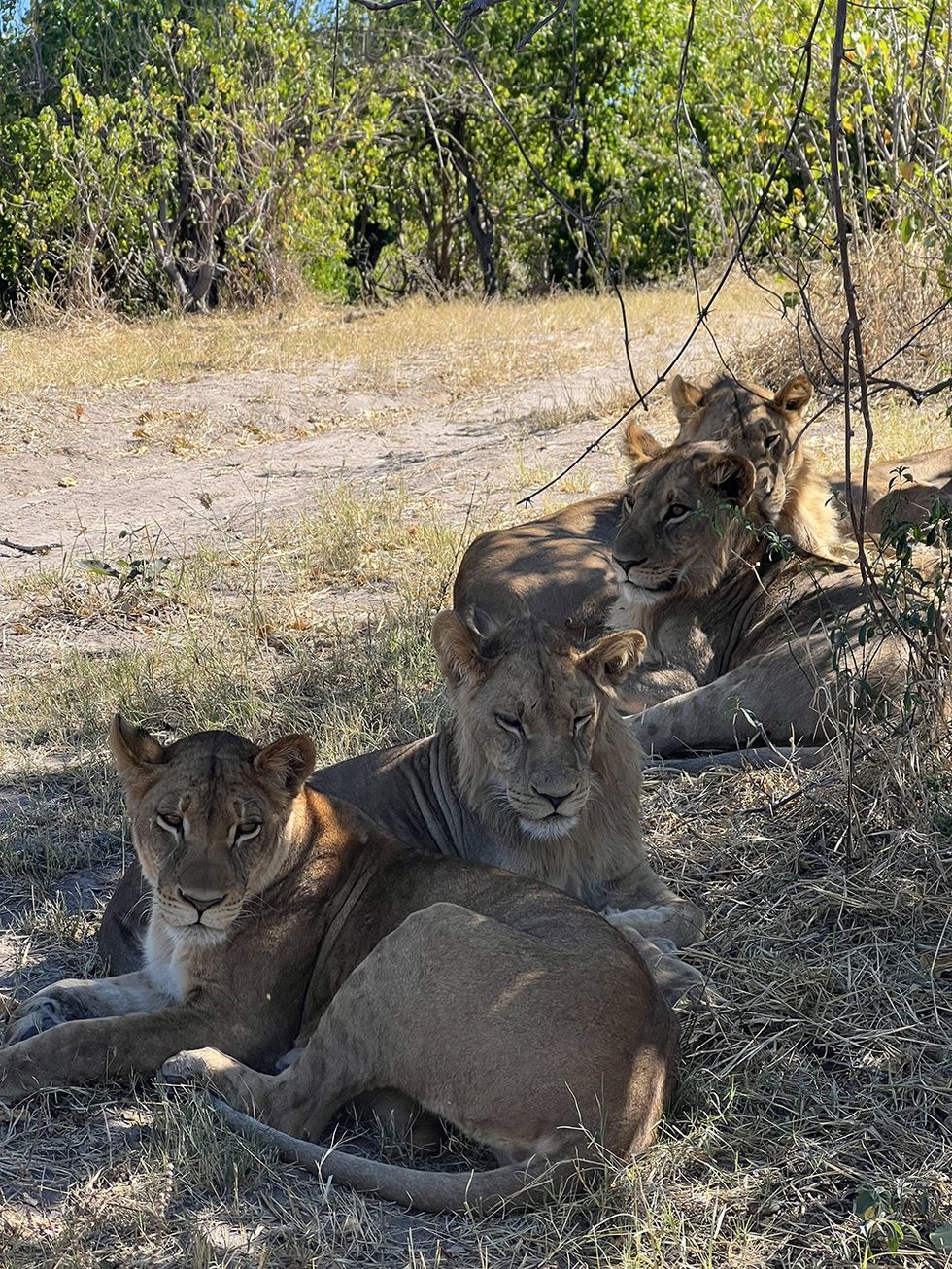
Still, I am who I am, and that person was thrilled to arrive at DumaTau, which was definitely the most resort-like stop of our journey. With its riverside views—which could be seen from my room, a sparkling pool, and well-equipped gym—this was a place that felt most aligned with my new habit of shamelessly taking nonstop selfies when the Botswanian morning and evening light was at its glowiest. It also was, I decide, the ideal backdrop for the cut-out Baobab dress still languishing in my suitcase. I break it out one night with a pair of (also untouched) high heel mules, and a man from the Wilderness team offers to take my picture. “My wife hates every photo I take of her, but I’ll try,” he says before proceeding to set up several shots like a pro and hype me up with a “work it, girl.” We get the shot right before my stiletto gets stuck in the holes between wood planks and I nearly faceplant. The night sky darkens and I spend the meal with my outfit completely obscured by two blankets, both of which I keep swaddled around me as I very carefully try not to trip on the way back to my room after eating.
Our last sunset in the bush creeps up faster than I think it will, and the location our guide finds for us is transcendent. A vast expanse of tall grass, gently swaying in the breeze, gives way to glistening water and a coastline dotted with the outline of palm trees. The deep purple sky blurs into buttery yellow and then vivid orange, bathing everything in a soft focus lighting. I become surprisingly emotional about the fact that within a day I’ll be beginning the long haul back to my zebra- and warthog-free life in Brooklyn. I turn to a few guests in my group and say how thrilled I am to have shared these last few days with them, how when I first arrived I wasn’t sure if it was going to be the right fit for this place. “I’m not exactly…an outdoor girl,” I say and give a half shrug.
“Oh Alison,” one of them responds with a wry smile. “It’s okay—we already know.”

